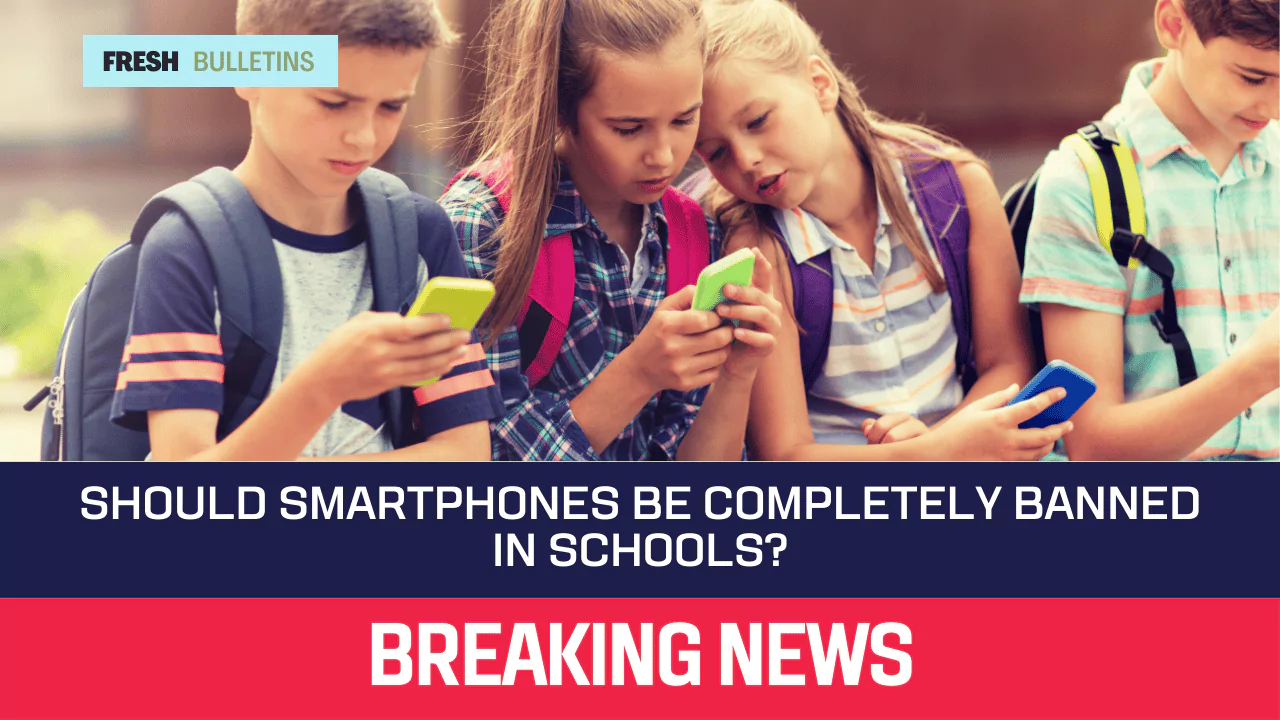Should Smartphones Be Completely Banned in Schools?
The question of smartphones in schools is a complex one, with strong arguments on both sides of the debate. A complete ban may seem like a simple solution, but it’s important to weigh the potential benefits of allowing controlled smartphone use against the drawbacks.
Pros of Allowing Smartphones in Schools
1. Access to Educational Resources
Smartphones are powerful learning tools. They provide instant access to educational apps, e-books, dictionaries, and online resources that can supplement classroom learning. Students can use them for research, watch educational videos, and stay up-to-date on current events.
2. Improved Communication
Smartphones allow for quick and easy communication between students, teachers, and parents. Students can use messaging apps to clarify concepts learned in class, teachers can share assignments and updates, and parents can stay connected with their children throughout the day.
3. Potential for Increased Engagement
Interactive learning apps, educational games, and online simulations can make learning more engaging for students. They can cater to different learning styles and provide a more personalized learning experience.
4. Emergency Help
- Immediate Communication: In the event of an emergency, students can immediately call emergency services or contact school authorities. This quick access to help can be critical in situations like accidents, health issues, or security threats.
- Emergency Apps: Many schools can implement emergency apps that allow students to alert staff quickly and discreetly in dangerous situations. These apps can also provide vital information during emergencies, such as evacuation routes or safe zones.
- Real-Time Information: Smartphones can receive real-time alerts and updates from school administrations during emergencies, keeping both students and staff informed about the situation and any necessary actions.
5. Parents Tracking
- Location Monitoring: Parents can use GPS tracking to monitor their children’s location for safety reasons. This is particularly comforting for parents when their children are commuting to and from school.
- Communication: Smartphones facilitate easy and direct communication between parents and children. This can be crucial for coordinating pick-ups, informing about delays, or discussing after-school plans.
- School Updates: Schools can use apps to send notifications directly to parents’ and students’ smartphones about school events, cancellations, or other important notices, keeping parents well-informed.
Cons of Allowing Smartphones in Schools
1. Distractions
The biggest concern with smartphones in schools is the potential for distraction. Social media notifications, games, and texting can easily divert students’ attention from lessons and classroom activities. This can hinder learning and reduce academic performance.
2. Cyberbullying and Harassment
Regrettably, smartphones have the potential to serve as instruments of cyberbullying and harassment. Students may become targets of online abuse, resulting in emotional distress, social anxiety, and a hostile learning environment. Educational institutions have a fundamental responsibility to safeguard the safety and well-being of their students, which includes addressing concerns related to cyberbullying.
3. Decreased Academic Performance
Studies have shown a correlation between excessive smartphone use and lower academic performance. Distractions can hinder learning, and the constant urge to check phones can lead to reduced focus and concentration. Additionally, some students may use their phones to cheat during tests or assignments.
Strategies to Regulate Smartphone Use in Schools
Instead of an outright ban, schools can implement strategies to regulate smartphone use and mitigate the drawbacks.
- Enforce Usage Limits: Schools can designate specific areas and times when phone use is allowed, such as during breaks or in designated zones. This allows students to stay connected with parents and friends while minimizing classroom distractions.
- Prohibit Mobile Phones During Lessons: During class time, phones should be silenced and stored away to ensure students focus on learning. Teachers can create designated storage bins or pouches for phones at the beginning of each class. This ensures minimal disruption and allows teachers to maintain a focused learning environment.
- Promote Programs for Digital Literacy: Schools can equip students with the skills to navigate the digital world responsibly. Programs that teach digital citizenship, cyberbullying prevention, and responsible online behavior can empower students to use technology safely and ethically. This can help students develop healthy habits around phone use and make informed decisions about their online activity.
The Debate: Ban or Allow Smartphones in Schools?
The decision of whether or not to allow smartphones in schools is not an easy one. A complete ban may seem like a quick fix, but it also removes the potential benefits these devices offer. For many students, smartphones are an integral part of their lives, and a complete ban can feel isolating and restrictive.
Ultimately, the goal is to create a safe and productive learning environment where technology can be used as a tool to enhance, not hinder, education.
By implementing clear guidelines, promoting responsible use, and fostering digital literacy, schools can find a balance that allows students to reap the benefits of smartphones while minimizing distractions and promoting a positive learning experience.
This approach requires collaboration between educators, parents, and students to develop a set of rules that respects the responsible use of technology while ensuring a focus on learning and academic achievement.







